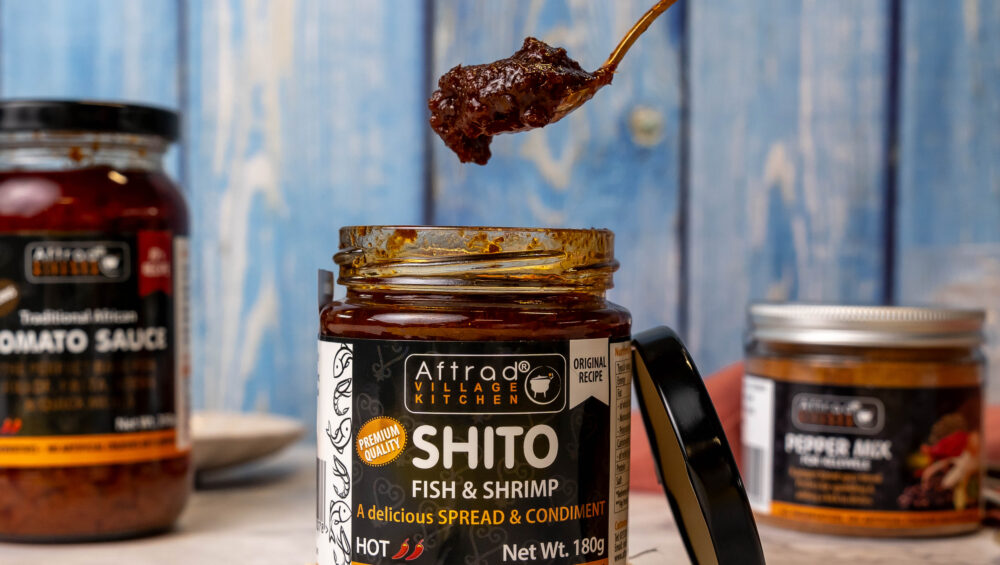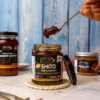If you’ve ever eaten Ghanaian food, you’ve probably tasted shito. This dark, spicy, and delicious black pepper sauce is found on almost every table across the country. It goes with almost anything; rice, kenkey, waakye, banku, bread, and even fried rice. But shito is more than just a sauce. It is part of Ghana’s history, culture, and way of life.
What Is Shito?
The name “shito” comes from the Ga language and simply means “pepper.” But don’t let the name fool you; this sauce is much more than just ground pepper. It is made by blending peppers, garlic, ginger, dried fish, prawns, and a mix of spices, then cooking it all in oil for a long time. The result? A rich, flavorful, and slightly smoky sauce that can last for months without going bad.
Every family and region in Ghana has its own way of making shito. Some like it extra spicy, while others make it with more fish for a deep, savory taste. Some people even make a fresh version without oil, using just mashed pepper, onions, tomatoes, and salt. Depending on the type of pepper used, this fresh version can be red (shitor tsulu) or green (kpakpo shito).
Why Do Ghanaians Love Shito So Much?
Shito is like Ghana’s own version of ketchup or chili sauce, it goes with almost everything! People eat it with kenkey, steamed rice, waakye, and banku. Some even spread it on white bread or use it as a dip for spring rolls. If you walk into a Chinese restaurant in Ghana, don’t be surprised to find shito served alongside fried rice instead of soy sauce!
But beyond its great taste, shito also tells a story of Ghanaian culture. Long ago, before refrigerators were common, people needed a way to keep food fresh for longer. That’s why they started making shito with lots of oil. It helped preserve the ingredients, especially the dried fish and prawns. Even today, a well-cooked jar of shito can last for months without spoiling.
Shito and Ghana’s Coastal Heritage
Shito’s history is closely linked to Ghana’s coastal regions, where fishing is a big part of life. Fishermen’s families would dry fish and shrimp and use them in shito, ensuring that the seafood could be enjoyed even when fresh fish was not available. This is why the sauce has such a deep, rich, and slightly fishy taste. It’s a reminder of the hardworking fishing communities that have shaped Ghanaian cuisine.
A Boarding School Essential
For many Ghanaian students, shito is not just a home essential, it is a boarding school lifesaver. In boarding schools across the country, students carry shito in large jars to add flavor and spice to their meals. Whether it’s eating it with plain rice, gari, or yam, shito makes every meal more enjoyable. It also serves as an important protein boost since it is packed with dried fish and shrimp. For students, shito is not just a sauce, it’s survival!
More Than Just a Sauce
For Ghanaians, shito is more than just something to put on food, it is a part of our identity. Almost every home has a jar of shito in the kitchen, and every family believes their version is the best! Whether homemade or bought from the market, shito is a trusted companion to many meals. It represents creativity, resourcefulness, and our love for bold flavors.
So, the next time you take a spoonful of shito, remember; you’re not just tasting a sauce. You’re enjoying a piece of Ghana’s history, culture, and passion for good food. And that is what makes shito so special.




